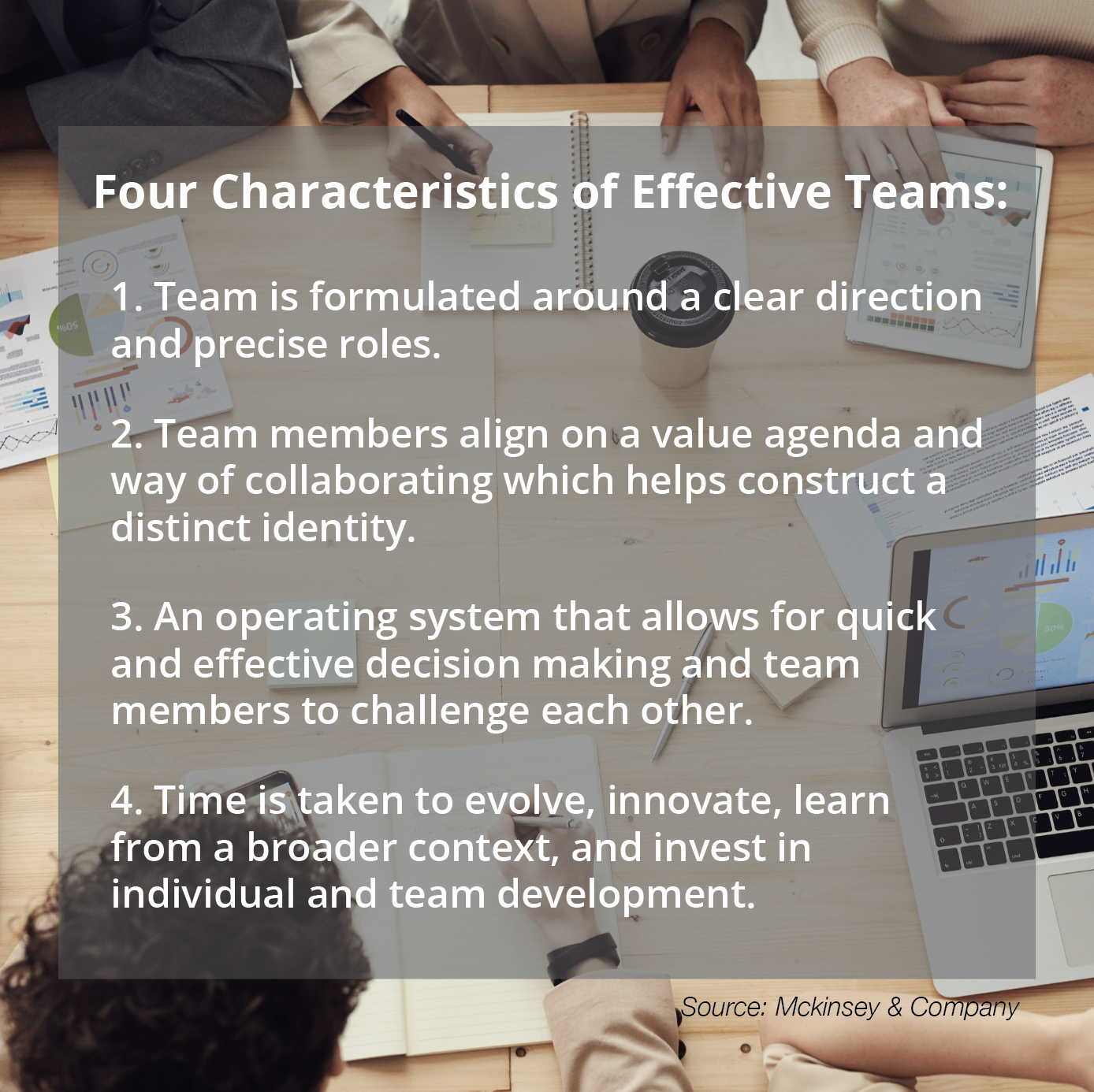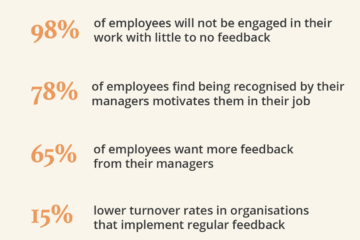Characteristics of Highly Effective Teams
Organising your team and providing them with an environment that allows them to function to their greatest capacity is a challenge for many managers. Observing and understanding how high performing teams operate is key to achieving successful outcomes. By addressing the key areas of performance, leaders can yield significant results in productivity and efficiency. Research by Mckinsey & Company found that the following four characteristics collectively contributed to effectiveness in teams.

1. Formulating a team around clear direction and precise roles
Teams should be configured based on a clear directive for each team member, so that they have a complete understanding of exactly what is expected of them and what their responsibilities are in their role. Securing the correct talent for each position and making sure that each team member has the capability and competence to carry out their duties with high quality results is fundamental in fostering effectiveness.
2. Aligning on a value agenda and way of collaborating which helps construct a distinct identity.
All members of a team should agree on a set of priorities and a value agenda to instil a common purpose or unifying goal. This enables a team to feel a sense of connection and group identity with a centralised motivation even though their individual roles may be quite different. Collaboration and appreciation of each others contributions to the workplace are essential for teams to function as a whole.
3. Implementing an operating system that allows for quick and effective decision making and team members to challenge each other.
Teams in successful businesses are able to respond to situations that require decisions to be made in a timely yet effective way. This stops time from being wasted and allows for resources to be allocated in the most practical way. Team members should also be able to challenge each others behaviours and ideas by having healthy expectations for a certain level of excellence, which is important for teams to thrive.
4. Taking the time to evolve, innovate, learn from a broader context and invest in individual and team development.
Learning and development should be continuous and constant processes that businesses must invest in to see long term improvements. By prioritising ongoing improvements and career advancement, individuals, teams and subsequently organisations elevate and evolve to a higher level of functioning.
Source: Bergeron, N., Smet, A. de, & Meijknecht, L. (n.d.). Improve your leadership team’s effectiveness through key behaviors. McKinsey & Company. Retrieved from https://www.mckinsey.com/capabilities/people-and-organizational-performance/our-insights/the-organization-blog/improve-your-leadership-teams-effectiveness-through-key-behaviors
Learn to become a great leader with Eclipse.




0 Comments